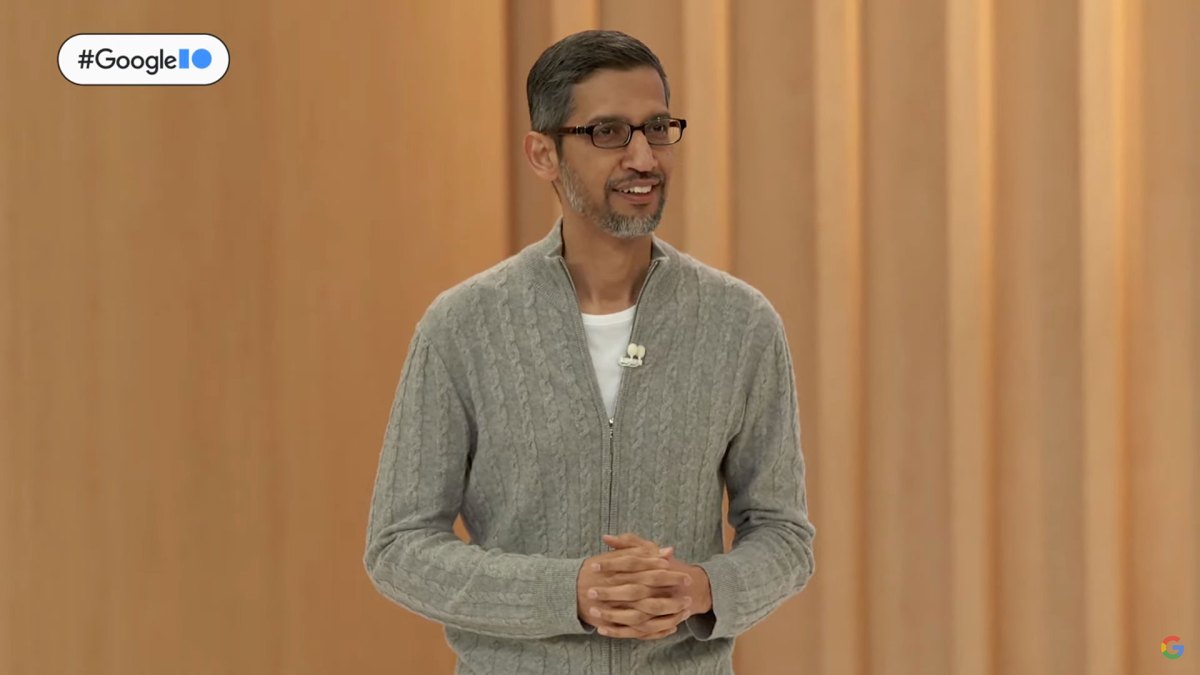Tesla Robotaxi reveal: What to expect | TechCrunch
Tesla is gearing up to reveal its Robotaxi this Thursday, and everyone wants to know what it will look like, whether Tesla will unveil a commercialization strategy, and what outrageous timelines Elon Musk might announce to bump Tesla’s stock.
The “We, Robot” event will take place at 7 p.m. PT at Warner Bros. Discovery’s movie studio in Burbank, California, and we’ve got details on how to watch it here.
Musk had originally planned to reveal the Robotaxi – which he has also referred to as a Cybercab – on August 8. That’s a deadline Musk set for himself and Tesla a few hours after a Reuters report found that the automaker shelved its plan to build a lower-cost EV and would instead focus its resources on a robotaxi.
While Musk initially accused Reuters of lying, over the next couple of weeks, Tesla indeed laid off 10% of staff to usher in a “next phase of growth,” and Musk said Tesla would be going “balls to the wall for autonomy.”
Tesla has seldom stuck to Musk’s timelines, and as expected, this Robotaxi event ended up getting pushed back to October after Musk requested “an important design change to the front.”
Investors who have backed Tesla’s vision for autonomy have been waiting for Tesla to finally reveal a Robotaxi. But the timing might not be great. Tesla’s margins have taken a hit over the past year or so due to ramped up Cybertruck production, among other factors. Its third-quarter deliveries were somewhat disappointing, and Tesla has issued its fifth Cybertruck recall within a year of launching the vehicle.
A new vehicle would mean more investment into production lines, factory downtime, and other potentially costly issues – things investors don’t love to hear about.
Whether it’s all hype or at least some substance, we will soon find out. But here’s what we expect to see.
A Cybercab prototype

The main thing we expect to see is a prototype for a new vehicle concept, which will be Tesla’s first since it announced the Cybertruck back in November 2019.
Musk has referred to the robotaxi as a Cybercab, which seems to confirm the design concept revealed last year in Walter Isaacson’s biography of the executive – a two-door, two-seater, Cybertruck-like compact vehicle, complete with angular edges and a stainless steel finish.
The vehicle will also likely be built without a steering wheel or pedals. While Tesla engineers have advocated against this at launch, Musk has been firm in his desire to bring a purpose-built vehicle to market, per Isaacson’s book.
Tesla may run up against regulatory issues for that design choice, which don’t align with federal motor safety standards, and we partly expect Musk to use that as a reason why getting the Cybercab to market will be difficult.
Tesla’s lead designer, Franz Von Holzhausen, told TechCrunch’s Kirsten Korosec that the company’s existing vehicle portfolio has laid the foundation for what’s to come with the Robotaxi.
“In a strange sort of way, we’ve been working our way — in a very public way — to what an autonomous future will look like,” Von Holzhausen said. “So you see the big interface that we have, the way it’s configurable and upgradable, and we bring a variety of entertainment pieces to it, and some humor as well. And I think that will continue to evolve.”
Smoke and mirrors

Tesla usually hosts its big reveal events at one of its facilities, so the Hollywood studio choice is a step-change that signals Musk’s showmanship will be on display.
The studio in question is open to the public for tours, so visitors (who are mainly Tesla shareholders and superfans) will get the chance to be dazzled by the sets of Batman, Friends, Gilmore Girls, The Big Bang Theory, Harry Potter and other titles.
It also allows Tesla to take advantage of the large sound stages and sets, some of which resemble a slice of suburbia and even a small downtown area. This could be the perfect place for Tesla to do a demo of its Cybercab in autonomous action – it’s a controlled, closed environment with no other traffic where the car will be able to drive itself at low speed.
We think the demo could feature the ride-hailing app that Tesla teased during its first-quarter earnings call in April.
Other vehicle and product announcements

The title of the event, “We, Robot”, is a nod to Isaac Asimov’s series of science fiction short stories called “I, Robot” which explores the relationship between robots and humans. As such, many believe the event will feature updates on Optimus, Tesla’s humanoid robot. That said, Asimov’s stories revolve around three laws of robotics that prioritize human safety – 1) A robot may not injure a human being or allow a human to be injured through inaction; 2) A robot must obey orders given by a human being unless that conflicts with the first law; 3) A robot must protect its own existence unless that contradicts the first and second laws. Those fit neatly into autonomous driving.
Deepwater Asset Management predicts that in addition to a Cybercab prototype, Tesla will provide previews (but crucially not a prototype) for the $25,000 EV, which fans are calling the Model 2. Analysts Gene Munster and Brian Baker said they expect the Model 2 to have a similar look and feel to the Cybercab, likely based on past comments from Tesla that the two would share a vehicle platform.
The firm also thinks Tesla will provide more details on a Cybervan, a fully autonomous passenger van that could in the future augment public transportation. This prediction is based on Tesla’s March 2023 investor presentation that featured a lineup of Tesla’s current and future vehicles, including a teaser of a van-sized car.
Some potential wildcards
Building a robotaxi is one thing. Commercializing it is another. Tesla may be able to rely on the uniqueness of its vehicles and the company’s general fan power to attract customers for a ride-hail service, but many won’t want to make the switch to a service that will likely be less reliable at launch.
One wildcard prediction we have is that Tesla could announce a partnership with Uber, which has demonstrated that its existing global ride-hail platform is attractive to autonomous vehicle companies. Over the past few weeks, Uber has been signing on AV companies at a rapid clip, including Waymo, Cruise, Wayve, and others. While Musk seems to want to go it alone, partnering might be the best way to actually commercialize these vehicles.
Another potential wildcard is that McDonald’s is involved in this somehow, based on an X post from the fast food chain last week that said, “chat’s about to pop off 10.10.” Musk replied with the laugh-crying emoji, so we might expect to see some kind of autonomous food delivery demo or announcement with McDonald’s on Thursday.
What we don’t expect to see
There will be plenty of hype and chatter about Musk’s vision of an autonomous future, during which the executive will likely make the same argument that Uber made a decade ago about the possibilities for shared rides – it will be so easy and cheap to hail an AV, that people won’t need to own their own vehicles.
A rosy picture, but one that we don’t expect to be backed up Thursday with a clear path to commercialization.
In the past, Musk has said Tesla vehicles on the roads today would be able to progress to autonomy with merely a software update, allowing owners to add their cars to Tesla’s ride-sharing app and rent them out to make extra cash. Tesla has said it would take something like 25% to 30% of the revenue from those rides, and in places where there aren’t enough people to share cars, the automaker would provide a dedicated fleet of robotaxis.
Musk has been promising a fully autonomous Tesla for years now, but has yet to introduce one. Despite Tesla’s advancements in its advanced driver assistance system, named Full Self-Driving (FSD), the tech is still not fully self-driving. It requires a human driver to be attentive behind the wheel and take over if needed.
This might be why Adam Jonas of Morgan Stanley, who is an undeniable Tesla bull, said he expects Tesla will offer a “‘dual’ approach with respect to autonomous ridesharing.” There will be a ‘supervised’ autonomous/FSD rideshare service, and a fully autonomous app-based Cybercab, he said, with an expected initial commercial launch slated for late 2025 or 2026.
When it comes to production of the Cybercabs themselves, the analysts at Deepwater point to the lag between Tesla’s unveiling of products and ramping production. The minimum gap of 10 months was with the Model Y, whereas the Cybertruck took 48 months, and the Semi is at 79 months and counting. Tesla delivered a handful of Semis in December 2022, but has yet to ramp up to volume production.
“This suggests the start of production for any of the vehicles announced in August would begin in June of 2025 at the earliest,” Deepwater wrote.
And since the robotaxi event got pushed back so Tesla could “make some important changes,” then the product is still likely a long way off from being ready to go to production.
This article has been updated to include comments from Tesla’s lead designer. It was originally published October 8 at 12:22 pm PT.




